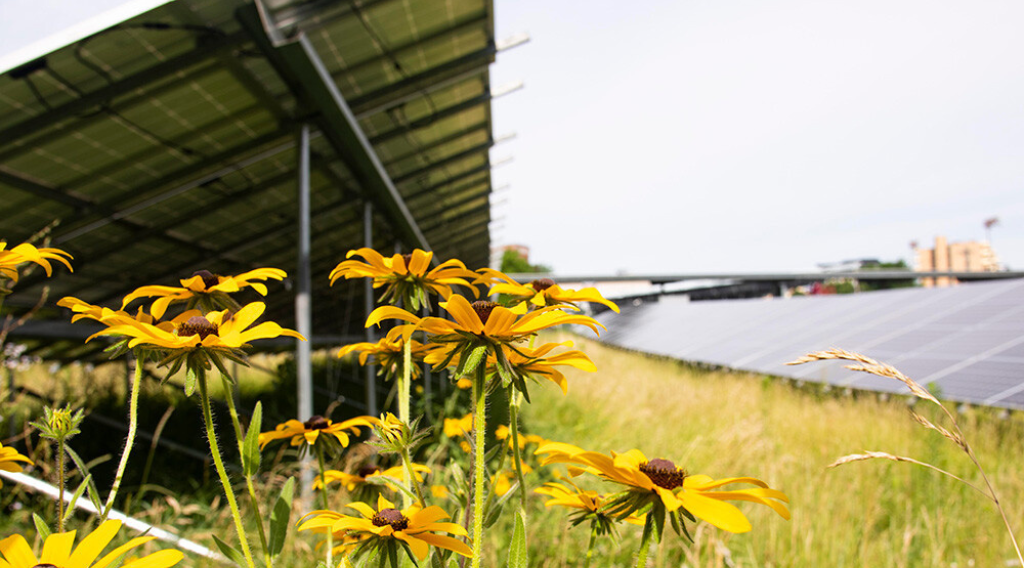
Photo courtesy of David Mulla
The first case study is now available from a groundbreaking project to establish the first science-based stormwater and water quality standards for solar farms. The Great Plains Institute is helping lead the Photovoltaic Stormwater Management Research and Testing (PV-SMaRT) project along with the National Renewable Energy Laboratory, Fresh Energy, and the University of Minnesota. PV-SMaRT is funded by the US Department of Energy’s Solar Energy Technology office.
GPI is working with Fresh Energy to develop a series of case studies highlighting three of the five sites being studied as a part of the project. Connexus Energy’s Renewable Energy Station in Ramsey, Minnesota, is one of the PV-SMaRT project sites and the focus of the first case study. The solar installation on the site includes south-facing panels with 3.5 megawatts of capacity. Additionally, the site has 5.3 megawatts of storage capabilities.
“This site is important because it is the bookend—it is a site that requires only groundcover green infrastructure [to infiltrate stormwater] in almost any circumstances. Comparing this site to our other project sites is incredibly useful,” stated Brian Ross, vice president at GPI.
Different soil types infiltrate stormwater at different rates. Soils are typically classified from Class A, which is sandy, to Class D, which is dense clay soils. Class A soils infiltrate stormwater much more readily than other soil types. Stormwater carries sediment and pollution into streams and rivers. If stormwater is infiltrated, surface waters are protected.
At this solar site, the soil type is classified as sandy (Class A), and the groundcover consists of a mix of pollinator-friendly vegetation. The site earned “Exemplary” status on Minnesota’s pollinator-friendly scorecard for the pollinator-friendly plantings. Pollinator ground cover with its deep roots enhances infiltration even further.
Read the case study and learn more about the Ramsey site, the research process, the site benefits, and stakeholder feedback on Fresh Energy’s website.
More about this groundbreaking project can be found on the National Renewable Energy Laboratory’s website.


